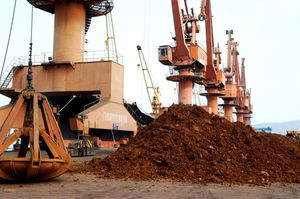--News Direct--
By Austin DeNoce, Benzinga
As 2023 drew to a close, the nuclear energy market witnessed a remarkable turnaround, particularly in its primary fuel, uranium. For the past decade, the market had been sidelined, but it appears nuclear energy is experiencing a palpable resurgence, earning its place back in the global energy discussion. While this resurgence was marked by shifting public sentiment and governmental support, it was also underscored by significant developments and challenges in the nuclear sector. Sprott Asset Management, a leader in precious metals and energy transition investments, explored these events in detail in its latest uranium outlook, “What a Year for Uranium and Nuclear Energy.” Below are the key highlights from the report – especially interesting if this is just the beginning of a nuclear and uranium renaissance.
The Resurgence Of Nuclear
The nuclear sector's journey from oblivion to center stage by 2023 was nothing short of dramatic. At COP26 in 2021, governments began to acknowledge nuclear power as a necessary ingredient to achieving lofty net-zero targets, but it was still met with controversy. However, by COP28 in 2023, nuclear energy was a headline act. This shift marked a significant change in the narrative, but it also birthed concrete commitments from 22 countries to triple their nuclear energy capacity by 2050.
Geopolitical And Economic Realities Reshaping Energy Policies
The energy crisis of 2022, primarily triggered by Russia’s invasion of Ukraine, played a pivotal role in reshaping global energy policies and highlighting the importance of onshoring the supply of many key materials. The circumstances were reminiscent of the OPEC oil crises, which forced several G20 economies – including Japan, the U.K., Germany and the broader European continent – to reevaluate their energy dependencies. To make matters worse, Germany's decision to phase out nuclear power backfired significantly, leading to an increased reliance on the dirtiest form of coal and a surge in energy prices. This scenario served as a cautionary tale, demonstrating the perils of neglecting energy security for political ideals.
The Reality Of Renewable Energy
To put nuclear energy’s relevance into context, it’s important to understand the reality of renewables. While renewables like solar and wind are expanding at a record pace, they face their own challenges, particularly in the mismatch of energy production and demand. In areas where renewables are well developed, and the geography provides a high degree of sunlight or wind, this can lead to situations where the cost of electricity from renewable sources is zero or even negative during peak production. However, this energy surplus is useless without cost-effective batteries, highlighting the necessity for practical storage solutions. Even with low-cost battery solutions, locations with intermittent sun or wind have little to no hope of meeting their baseload power demands through renewables.
Uranium's Comeback And The Opportunities Ahead
As would be expected, the renewed interest in nuclear energy has direct implications for the uranium market. In fact, nuclear energy coming back in style led to a historic rise in uranium prices from $48 to $91 per pound in 2023 – a gain of roughly 90%. But price action was far from the whole story as this previously dormant market grappled with new challenges and opportunities in rebuilding the uranium supply chain.
Despite reaching incentivizing levels, the uranium supply response is expected to be slower than anticipated due to legacy issues and long development lead times. Sprott’s full article provides an in-depth analysis of this, including insights from Cameco Corporation (NYSE: CCJ) and other industry leaders. The article also explores the geopolitical dynamics influencing the uranium market, particularly the roles of Kazakhstan and Russia. With Kazakhstan emerging as a major uranium producer and Russia securing future production for its security of supply, the geopolitical landscape presents complex challenges for the global uranium supply.
The Sector’s Prospects In 2024 And Beyond
With the uranium spot price hitting new highs and utility contracting accelerating, the nuclear sector is looking poised for significant growth heading into 2024. The renewed interest in the sector is attracting much-needed capital investments to meet the current expansion plans but also to sustain the long-term growth and innovation in the market for the foreseeable future. In all likelihood, the electron reality and revitalization of the nuclear energy sector are poised to play a pivotal role in the clean energy transition, offering a reliable and low-carbon solution crucial for achieving global climate goals and securing a sustainable energy future – but supply chains that have long since disappeared need to be rebuilt.
Read the full report by Sprott’s CEO John Ciampaglia here.
Benzinga is a leading financial media and data provider, known for delivering accurate, timely, and actionable financial information to empower investors and traders.
This post contains sponsored content. This content is for informational purposes only and is not intended to be investing advice.
Contact Details
Benzinga
+1 877-440-9464
Company Website
View source version on newsdirect.com: https://newsdirect.com/news/uranium-prices-rose-by-about-90-in-2023-sprott-asset-management-ceo-discusses-this-rise-the-sectors-challenges-and-its-outlook-in-new-report-159385659






